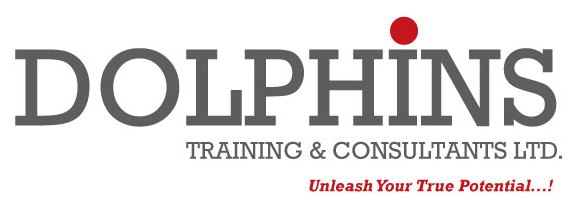![]()
The People Side of Project Management.
These influential skills are instilled in participants through real-world scenarios; the concepts and methods learned are immediately usable in the workplace, leading to a greater retention of newly acquired skills, measurable project improvements, and the achievement of desired project results.
Consisting of 5 days comprehensive workshop, it emphasizes the successful planning and initiation phases of the project management discipline. In addition to providing technique-based competencies, the Practitioner Program teaches students the “softer” skills as well, such as negotiation techniques, getting management buy-in and effectively working with others.
Target Audience:
Those who want to understand project management skills and concepts and who must influence projects customers and other team members.
Pre-requisites:
There are no pre-requisites for this course.
At Course Completion:
After completing this course, participants will be able to:
- Build a Work Breakdown Structure (WBS).
- Use a network diagram to display a Project Evaluation and Review Technique (PERT) chart.
- Use the Critical Path Method (CPM) in the network diagram to ensure the correct project duration.
- Estimate and schedule project tasks.
- Apply resources to a project plan.
- Explore different personality types and learn how they affect project management.
- Apply time-tested tools and techniques to actual projects.
- Create and communicate a shared sense of purpose between the project team and stakeholders about your project.
- Involve and engage key customers and use the views of others to create commitment and advance your project.
- Prepare to make difficult requests and influence people with whom you do not have official power; for example, obtaining additional resources for your project.
- Use a negotiation model that guarantees common understanding of the issue and creates accountability for and ownership of the final solution. Listen to and resolve stakeholders concerns.
- Use group facilitation skills to create a common reference point that includes the description of the business problem, where the project is going, how to actualize it, and stakeholder involvement at any given point in the project.
- Identify key stakeholders for the project to understand their assumptions and expectations and to get them involved at the right time.
- Negotiate agreements that get your project started correctly and keep it moving along.
Outline:
An Overview of Project Management
- The characteristics of a project.
- Project management processes.
- Project success and failure.
- Critical success factors and components.
- The effective project manager skills and characteristics.
- Roles and responsibilities.
- The time, cost, and scope target.
The People Side of Project Management
- Understanding people.
- Learn the use style models.
- Flexing your style.
- Understanding differences.
Planning the Project
- The components of the plan.
- Introduction to the case study.
- The project charter.
- The work plan.
- The control plans.
- The functions of a good project plan.
Work Breakdown Structure (Work Plans)
- Defining the work to be done.
- Creating the WBS demonstration of technique.
- The WBS task and the work package.
- Methods of subdivision.
- Use of the WBS.
Estimating
- Estimating accuracy.
- Estimating concepts and methods.
- Task-based estimation.
- Effort, productivity factors, influence factors.
Scheduling
- Schedule concepts and methods.
- Network diagrams.
- Precedence logic.
- Estimate duration.
- Create a network diagram demonstration of technique PERT/CPM.
- Allocation of resources.
- Gantt charts/histograms.
Risk Management
- Evaluation of risk.
- Identification, assessment, quantification, and contingency planning.
- Risk consequences and contingencies.
- A technique for planning for risk.
- Cost/benefit/risk considerations.
Project Control
- Measurement, evaluation, and quality control.
- Prerequisites to effective control.
- Key indicators.
- Change management and control.
- Progress reporting.
Project Completion
- Management of project completion.
- Post implementation.
How to Build Commitment and Accountability Through Effective Negotiation
- Common deficiencies and problems with negotiating agreements.
- Key elements in building commitment.
- Negotiation principles.
- 8-Step negotiation model/process/practice simulations.
Influence through Selling Ideas
- Initiating negotiations, promotion ideas, making difficult requests.
- Participant application to real project situations.
Group Facilitation
- Conceptualizing and planning a successful facilitation.
- Modified 8-Step negotiation model for groups.
- Facilitation tips to jump start and advance discussion/ground rules for facilitators.
Process Start-Up Matrix
- Components: scope facilitation, stakeholder map, and force field analysis.
- Building a sense of project purpose/application to team building.
- Responding to the project management process by using participants actual projects.
Scope Facilitation Technique
- Group facilitation process gets people excited about change.
- Builds commitment between team and stakeholders.
Stakeholder Mapping and Analysis
- Identify those who can help advance the project.
- Identify their assumptions and expectations about the project.
Force Field Analysis
- Group facilitation process quickly uncovers the constraints, assumptions, and risks.
- Create strategy to respond to barriers associated with your project.
The Art of Managing Resistance
- Understand your role in resistance.
- Respond to resistance by defining causes and create appropriate actions.
![]()
Dolphins Training & Consultants ltd
View Park Towers ,10th Fl ,Utalii Lane & L584-off UN Avenue, Gigiri.
P O Box 27859 00100 Nairobi, Kenya Tel +254-20-2211362/4/5 or 2211382
Cell:+254-700 086 219 / +254-712 636 404
training@dolphinsgroup.co.ke www.dolphinsgroup.co.ke
Your No.1 Corporate Training Partner DIT No./ 711
We push the human race forward and so do you.. Unleash Your True Potential.!
